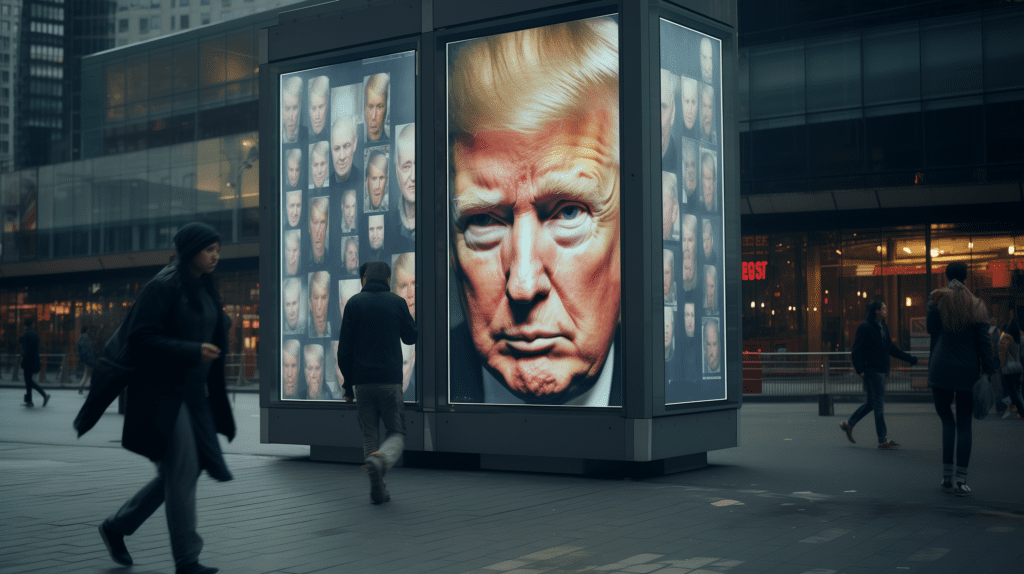Deep fakes, a term derived from “deep learning” (a subset of AI) and “fake,” refer to highly realistic, AI-generated digital forgeries of real human beings. These sophisticated imitations can be videos, images, or audio clips where the person appears to say or do things they never actually did.
The core technology behind deep fakes is based on machine learning and neural network algorithms. Two competing AI systems work in tandem: one generates the fake content, while the other attempts to detect the forgeries. Over time, as the detection system identifies flaws, the generator learns from these mistakes, leading to increasingly convincing fakes.
Deep fakes in politics
However, as the technology has become more accessible, it’s been used for various purposes, not all of them benign. In the political realm, deep fakes have a potential for significant impact. They’ve been used to create false narratives or manipulate existing footage, making it appear as though a public figure has said or done something controversial or scandalous. This can be particularly damaging in democratic societies, where public opinion heavily influences political outcomes. Conversely, in autocracies, deep fakes can be a tool for propaganda or to discredit opposition figures.

How to identify deep fakes
Identifying deep fakes can be challenging, but there are signs to look out for:
- Facial discrepancies: Imperfections in the face-swapping process can result in blurred or fuzzy areas, especially where the face meets the neck and hair. Look for any anomalies in facial expressions or movements that don’t seem natural.
- Inconsistent lighting and shadows: AI can struggle to replicate the way light interacts with physical objects. If the lighting or shadows on the face don’t match the surroundings, it could be a sign of manipulation.
- Audiovisual mismatches: Often, the audio does not perfectly sync with the video in a deep fake. Watch for delays or mismatches between spoken words and lip movements.
- Unusual blinking and breathing patterns: AI can struggle to accurately mimic natural blinking and breathing, leading to unnatural patterns.
- Contextual anomalies: Sometimes, the content of the video or the actions of the person can be a giveaway. If it seems out of character or contextually odd, it could be fake.
In democratic societies, the misuse of deep fakes can erode public trust in media, manipulate electoral processes, and increase political polarization. Fake videos can quickly spread disinformation and misinformation, influencing public opinion and voting behavior. Moreover, they can be used to discredit political opponents with false accusations or fabricated scandals.
In autocracies, deep fakes can be a potent tool for state propaganda. Governments can use them to create a false image of stability, prosperity, or unity, or conversely, to produce disinformation campaigns against perceived enemies, both foreign and domestic. This can lead to the suppression of dissent and the manipulation of public perception to support the regime.

Response to deep fakes
The response to the threat posed by deep fakes has been multifaceted. Social media platforms and news organizations are increasingly using AI-based tools to detect and flag deep fakes. There’s also a growing emphasis on digital literacy, teaching the public to critically evaluate the content they consume.
Legal frameworks are evolving to address the malicious use of deep fakes. Some countries are considering legislation that would criminalize the creation and distribution of harmful deep fakes, especially those targeting individuals or designed to interfere in elections.
While deep fakes represent a remarkable technological advancement, they also pose a significant threat to the integrity of information and democratic processes. As this technology evolves, so must our ability to detect and respond to these forgeries. It’s crucial for both individuals and institutions to stay informed and vigilant against the potential abuses of deep fakes, particularly in the political domain. As we continue to navigate the digital age, the balance between leveraging AI for innovation and safeguarding against its misuse remains a key challenge.
Comments are closed.